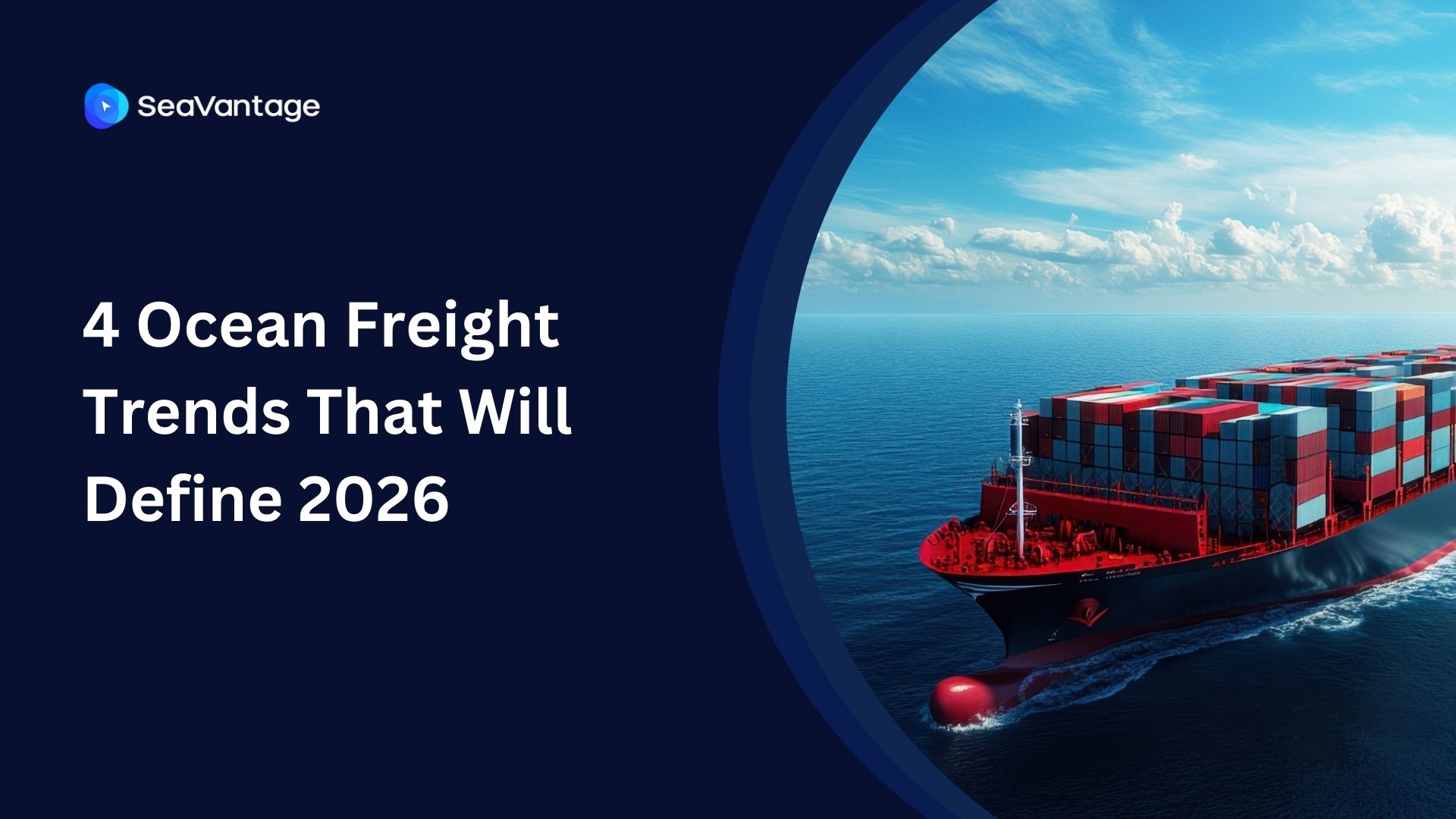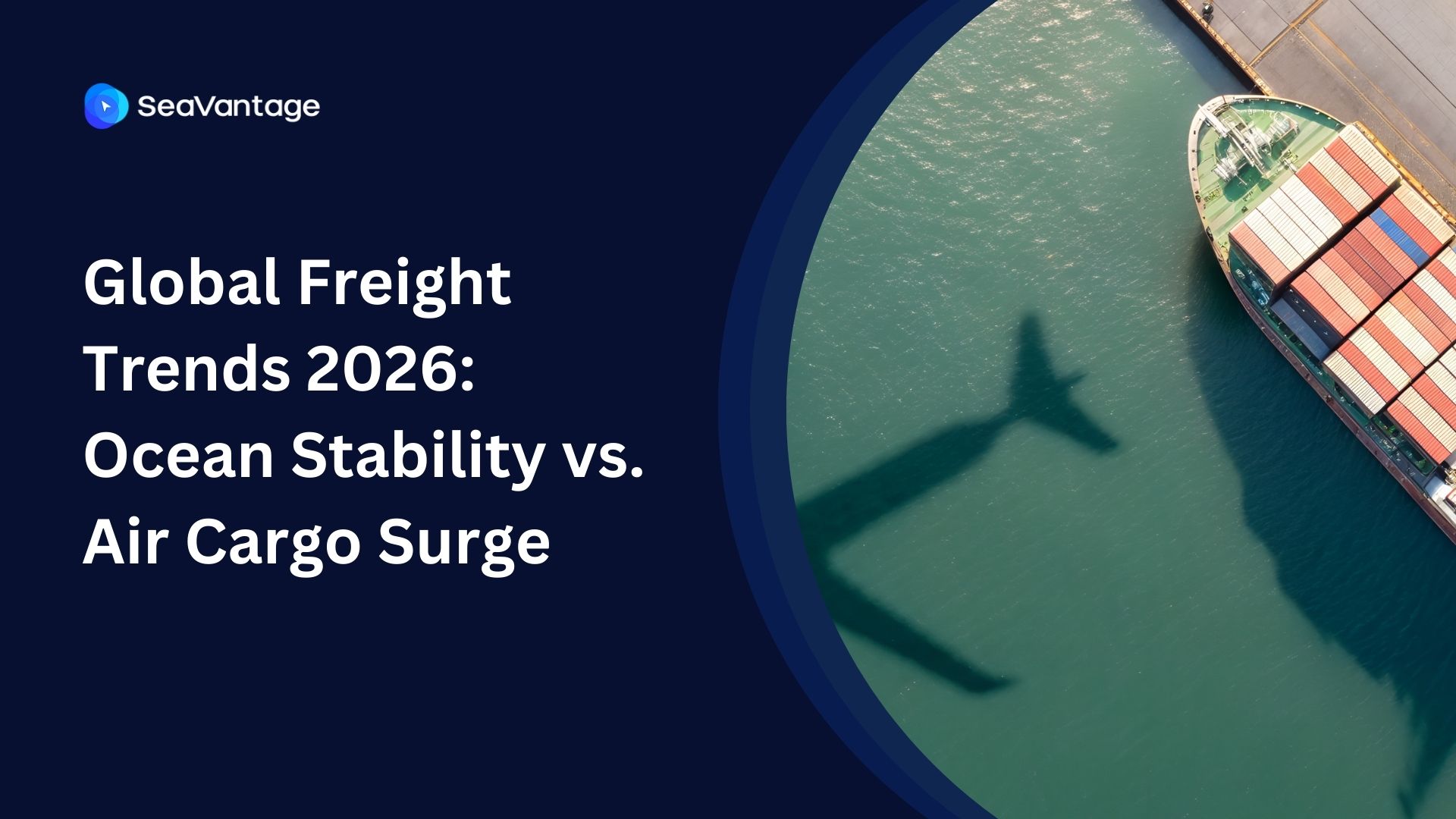Ocean Visibility vs Tracking: Why Tracking Alone Isn't Enough
In today's complex global supply chains, simply tracking shipments is no longer enough. The recent Red Sea blockade has served as a wake-up call for the shipping industry: traditional tracking methods fall woefully short in an era of geopolitical uncertainty and supply chain volatility. From predicting ETA changes due to route diversions to managing port congestion caused by sudden influxes of rerouted vessels, ocean visibility has emerged as a critical tool for navigating these turbulent waters.
This article explores the differences between ocean visibility and traditional tracking, highlighting why comprehensive visibility is essential in 2024 and beyond.
Understanding the Difference
Tracking
Traditional tracking provides basic information about a shipment's location and status at specific checkpoints. It's like snapshots of your cargo's journey.
Ocean Visibility
This offers a continuous, real-time view of your shipments, including predictive analytics, exception management, and actionable insights. It's more like a live video stream of your supply chain.
Key Components of Ocean Visibility:
- Real-time location data
- Predictive ETAs
- Exception alerts
- Environmental conditions monitoring
- Port congestion insights
- Customs clearance status
- Intermodal connections
Why Ocean Visibility Matters
- Resilience in Uncertain Times
The shipping industry faced significant challenges in early 2024, with attacks on vessels in the Red Sea disrupting global trade routes. Ocean visibility solutions provided crucial insights, allowing companies to:
- Reroute shipments proactively
- Assess the impact on transit times and costs
- Communicate effectively with customers about delays
- Sustainability Compliance
With the International Maritime Organization (IMO) implementing stricter emissions regulations in 2024, ocean visibility tools help:
- Monitor fuel consumption and emissions in real-time
- Optimize routes for fuel efficiency
- Ensure compliance with new environmental standards
- Port Congestion Management
As ports worldwide continue to face congestion issues, visibility solutions offer:
- Real-time updates on port conditions
- Predictions for potential delays
- Alternatives for cargo routing and modal shifts
- Enhanced Customer Experience
In an era of heightened customer expectations, ocean visibility enables:
- Proactive communication about shipment status
- More accurate delivery estimates
- Faster problem resolution
- Cost Optimization
By providing a comprehensive view of the supply chain, ocean visibility helps:
- Reduce detention and demurrage fees
- Optimize inventory management
- Improve resource allocation
- Risk Mitigation
Advanced visibility solutions offer:
- Early warning systems for potential disruptions
- Scenario planning capabilities
- Insurance and compliance documentation management
SeaVantage Ocean Visibility Solutions: A Transformative Approach
In the face of these challenges, SeaVantage's ocean visibility platform offers a transformative approach to logistics management.. By leveraging advanced AI and machine learning algorithms, SeaVantage provides unparalleled real-time visibility across the entire ocean freight journey. Their platform offers:
- Accurate predictive ETAs that account for potential disruptions like the Red Sea crisis
- Comprehensive port intelligence, helping shippers navigate congestion and optimize routes
- Automated exception management to proactively address issues before they escalate
- Seamless integration with existing supply chain systems for a holistic view of operations
- Sustainability insights to support compliance with new IMO regulations
With SeaVantage, logistics professionals can transform raw data into actionable intelligence, enabling them to make informed decisions quickly and confidently. As the case study demonstrates, this level of visibility can lead to significant cost savings and operational improvements, positioning companies to thrive in the complex landscape of global trade in 2024 and beyond.
Real-World Impact: A Case Study
In February 2024, a major electronics manufacturer faced potential production shutdowns due to component shortages. Using an advanced ocean visibility platform, they:
- Identified critical shipments at risk of delay
- Rerouted high-priority cargo via air freight
- Adjusted production schedules based on accurate ETA predictions
- Saved millions in potential lost sales
The result: Zero production downtime and improved supplier relationships.
Choosing the Right Solution
When selecting an ocean visibility platform, consider:
- Data sources and quality
- Integration capabilities with existing systems
- Predictive analytics features
- User interface and ease of use
- Customer support and training
Conclusion
As global supply chains grow increasingly complex, the shift from basic tracking to comprehensive ocean visibility is not just beneficial—it's essential. By providing real-time insights, predictive capabilities, and actionable data, ocean visibility empowers logistics professionals to make informed decisions, mitigate risks, and optimize operations in ways that traditional tracking simply cannot match.
In 2024 and beyond, companies that embrace advanced visibility solutions will be better positioned to navigate the challenges of global trade, meet customer expectations, and drive competitive advantage in an ever-changing marketplace.
2025년 9월, 주요 글로벌 항만에서 어떤 운송사가 가장 긴 선박 체류 시간을 기록했는지 확인해보세요. 트렌드를 비교하고, 지연을 파악하며, 전체 항만 데이터를 통해 운송 전략을 최적화할 수 있습니다.
2025년 8월, 주요 글로벌 항만에서 어떤 운송사가 가장 긴 선박 체류 시간을 기록했는지 확인해보세요. 트렌드를 비교하고, 지연을 파악하며, 전체 항만 데이터를 통해 운송 전략을 최적화할 수 있습니다.
2025년 7월, 주요 글로벌 항만에서 어떤 운송사가 가장 긴 선박 체류 시간을 기록했는지 확인해보세요. 트렌드를 비교하고, 지연을 파악하며, 전체 항만 데이터를 통해 운송 전략을 최적화할 수 있습니다.
iscover the 4 critical ocean freight trends for 2026, from the Red Sea reopening and fleet overcapacity to shifting global trade maps. Prepare your supply chain now.
Discover key 2026 freight market trends: Port of Houston expansion, air cargo "super peak," and ocean freight stability. Plan your supply chain with SeaVantage.
Explore November 2025 global port dwell time data. See which ports and carriers led in efficiency across Antwerp, Busan, Long Beach, Rotterdam, and Singapore.



.svg)





.jpg)

.png)